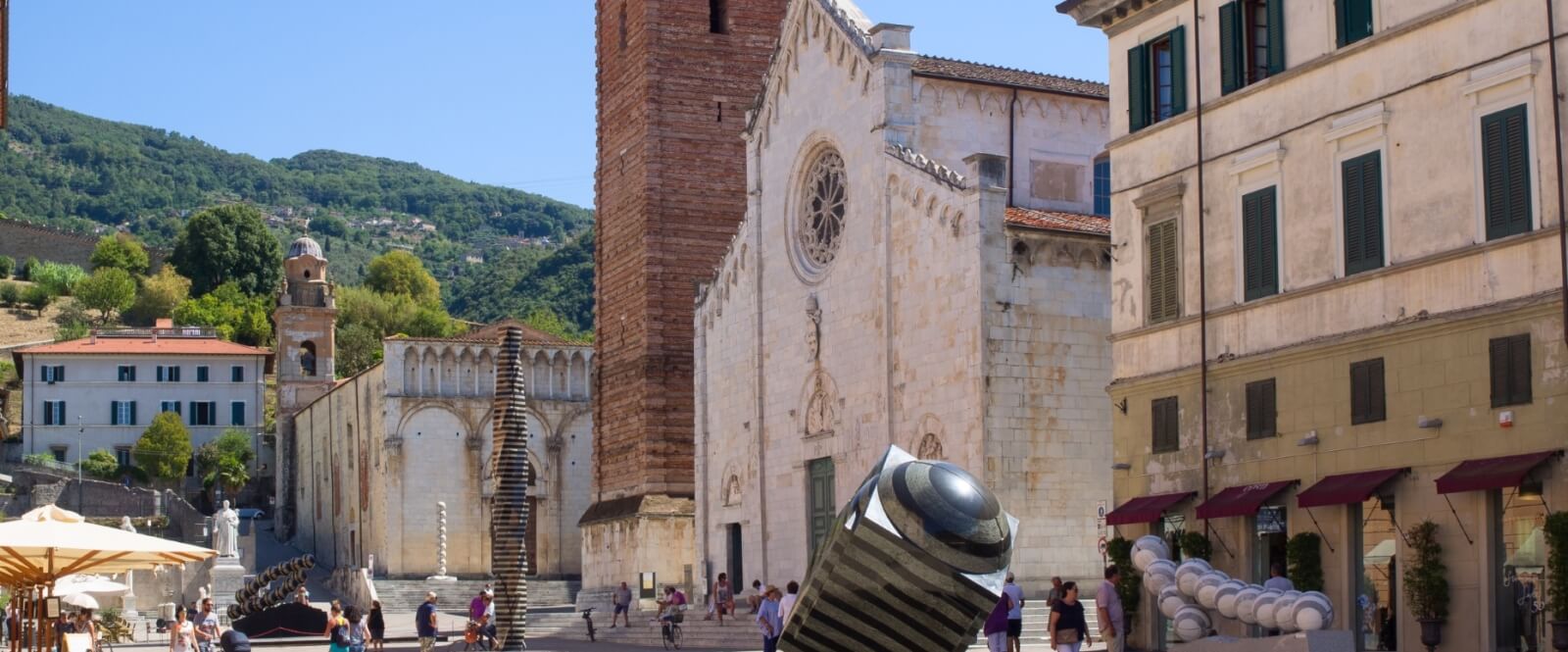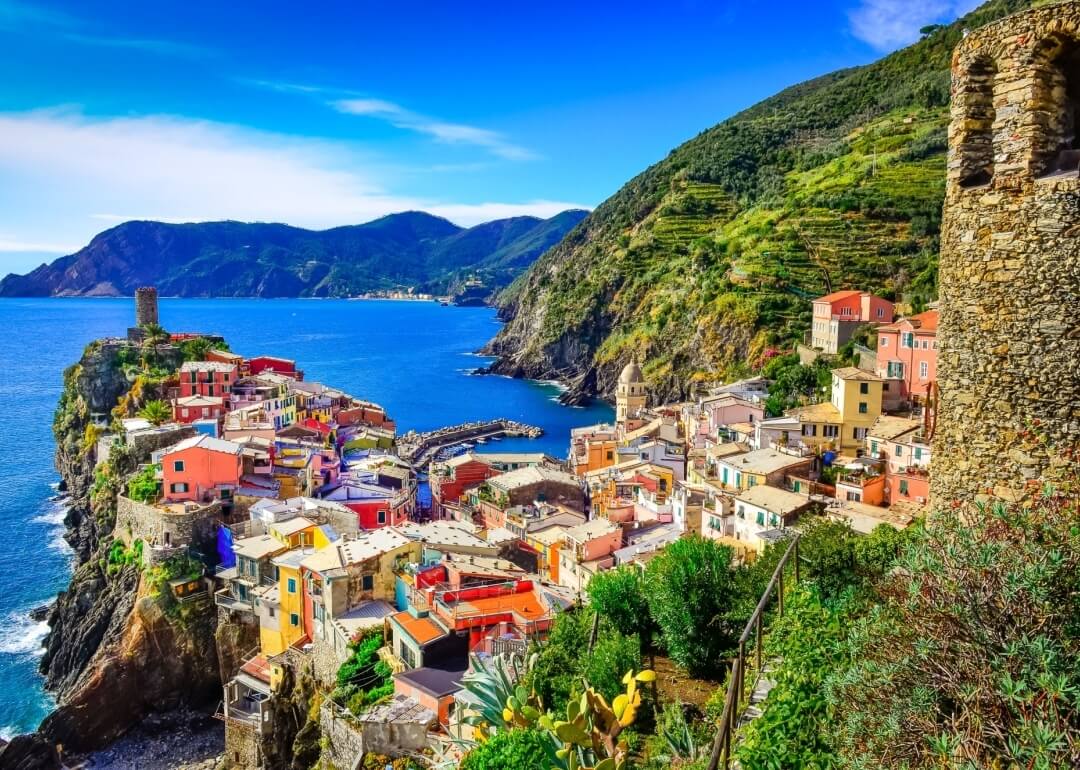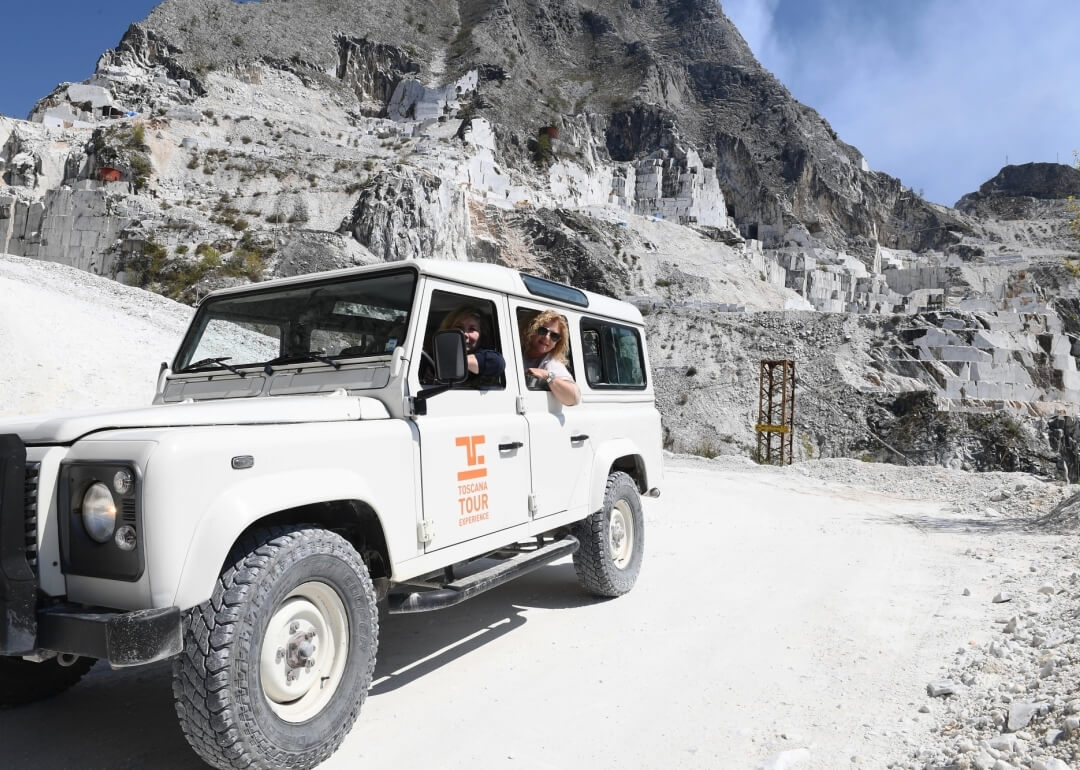Via Bottaccio, 1 – 54038 Montignoso (MS) Toscana
Pietrasanta, the city of Art
Pietrasanta, the city of Art
Pietrasanta, is a historic medieval and artistic town in northern Tuscany sometimes called the City of the Artists or Small Athens for its marble studios and monuments.
The town has Roman origins but the modern town is named for its founder Guiscardo Pietrasanta who built it in the mid-thirteenth century as part of the republic of Lucca. Unlike many popular Tuscan towns, Pietrasanta is not a hill town and its historic center is a pleasant place for strolling. It’s an important center for working marble and was used as a marble source by Michelangelo. Several international artists live or work here and there are art galleries and exhibits. The Bozzetti Museum is a very important museum of sculpture and sketches.
PIETRASANTA SHOPPING AND MARKETS
Thursday is market day in Pietrasanta. There’s an antique market the first Sunday of the month and a crafts the second Sunday of the month. There are several shops that sell handicrafts, marble items, and artworks. San Biagio day is celebrated with a fair in early February.
PIETRASANTA SIGHTS AND ATTRACTIONS
- Piazza del Duomo is the large main square. Here you’ll find cafes, people, art exhibits, the town’s principal buildings, and of course the Duomo.
- The Duomo, Church of S.Martino, dominates the square. It was built in the fourteenth century but has been remodeled several times. The exterior is covered with marble and inside are murals by Aldemollo and other important works of art.
- Palazzo Pretorio, the town offices and Town Theatre, was acquired by the town in the fourteenth century and has been remodelled several times. From the fourteenth to nineteenth centuries, it was center of the Vicar and the Captain of Justice and coats of arms can be seen on the marble facade.
- The Bruno Antonucci Archaeology Museum is inside the 16th century Palazzo Moroni on Piazza del Duomo. Exhibits range from prehistoric and Etruscan to medieval and Renaissance objects.
- Tower of the Hours, Torre delle Ore, started construction in 1530 but its current look dates from 1860.
- Bozzetti Sculpture Museum shows sketches, models and drawings of sculptures carried out by hundreds of Italian and foreign artists who worked at Pietrasanta, such as Botero, Cascella, Theimer, Folon, Mitoraj, Yasuda, Pomodoro, Tommasi and Gina Lollobrigida (the Hollywood star). It’s in the St. Agostino complex.
- St. Agostino’s Church and Convent is a complex originating in the fourteenth century. The church is Romanesque and has a marble facade. Inside are many important paintings and frescoes and a restored wooden choir in the apse. It’s currently the seat of art exhibits. The courtyard of the cloister is surrounded by marble columns and part of the frescoes that once adorned the walls are still visible. Today it houses the Center Cultural Luigi Russo, library, Museum of Sketches, and Bozzetti Sculpture Museum.
- Rocchetta Arrighina, Porta a Pisa is the only survivor of the three ancient town gates. Originally built in the fourteenth century, it had a 17th century fresco of the Annunciazione which is now near the town hall.
PIETRASANTA ART EXPERIENCE*
A city rich in art throughout the centuries, Pietrasanta is a well kept secret. An unparalleled and uniquely important ecosystem for international sculpture creation.
Exclusive Access: Go behind the scenes in the studios of respected artists and artisans. Discover the inner workings and explorations of the creative process.
See the city through the eyes of an artist: Pietrasanta has been held dear by the likes of Henry Moore, Bottero and Noguchi. Get an understanding as to why this place became a second home to some of the most important artists in modern and contemporary art.
Be hosted by an expert: Ashley is exceptionally positioned in this extraordinary world, allowing her to guide you deep into one of the most significant cultural landscapes few even know exist.
Connect with creators: Enjoy a coffee or aperitivo with the artists in their studios, creating lasting memories and personal connection in the heart of the "sculptors' mecca"
*Personalised Journeys: We can tailor your experience to match your artistic taste.
Discover masterpieces: See some of the largely undiscoverd monumental sculptures donated to the city by masters from of the world as a gift to a community dedicated to the production of their art.
Pietrasanta, Italy is home to an abundance of beautiful art and talented artists. Located at the base of the famous Carrara marble mountains, where Michelangelo sourced the marble for his David, this medieval town, founded in 1255, is a Mecca for sculptors worldwide. Thanks to the impeccable quality of materials, the unparalleled expertise, and the cutting edge technology, this part of Tuscany remains the premier location worldwide for the creation of sculptures in marble and bronze, for projects of all sizes.
We’ll start our visit at the gates of the medieval city and take you to the most important art sites in Pietrasanta. At the Church of Sant’Antonio you will see Bottero’s frescos of heaven and hell. You’ll see the temporary exhibition in the piazza del Duomo and in the former church of San Agostino. The cloisters of Sant’Agostino houses the Museo Bozzetti, where you’ll see the plaster models of important sculptures created here in the foundries of Pietrasanta. Throughout the city, we’ll point out artworks belonging to the International Park of Contemporary Sculpture, over 70 monumental sculptures donated to they city by famous artists who have crafted their works here.
Next, we’ll take you behind the scenes to discover the studios of artists and artisans who come from around the world to live and create art in this dynamic town. Spend time with artists as they explain their creative process, and try your hand at marble sculpting if you like! Find the perfect piece for your home or garden. A coffee or aperitivo with the artists in their studios creates lasting connections and memories of this incredible art experience.
Ashley Macleod is an art consultant working between Tuscany, Provence, and the US. She creates opportunities for art lovers and collectors to connect with high quality art and beautiful artists. Ashley is particularly interested in the power of art to positively affect the energy of a space and the people who inhabit it.
Pietrasanta Art Experience: Artist Studios & Art History of Pietrasanta
- Approximately 3 hours
- From 10:00 - 13:00 and from 16:00 - 19:30
- Tours start at Tre Luci studios and move to Pietrasanta
- Refreshments : In the mornings, we provide coffee, juice, water, pastries, fruit. In the evenings, we provide wine, water, charcuterie, cheese, focaccia, etc.
Artist Studios Aperitivo (Pietrasanta Tour not included)
- Approximately 1.5 hours
- Enjoy an aperitivo with the artists as they finish their work day. Meet the artists and see their latest creations. A truly unique experience to visit with professional, international artists in their studios, and a perfect way to start your evening in Pietrasanta.
- Location: Tre Luci Studios
- 18:00 - 19:30 (timing can be flexible, but most artists would be finishing work around 18:00 pm in the warmer months)
- A generous aperitivo will be offered including wine, water, charcuterie, cheese, focaccia, etc.
*For "Pietrasanta Art Experience" private tour and Artist Studio Aperitivo, contact us at bottaccio@bottaccio.com for prices and availability. Meeting point is in Pietrasnata. At an extra cost, transfer from the hotel is available.
Stay in touch
Need more information? Write us at: bottaccio@bottaccio.com
or call on +39 0585 340031





